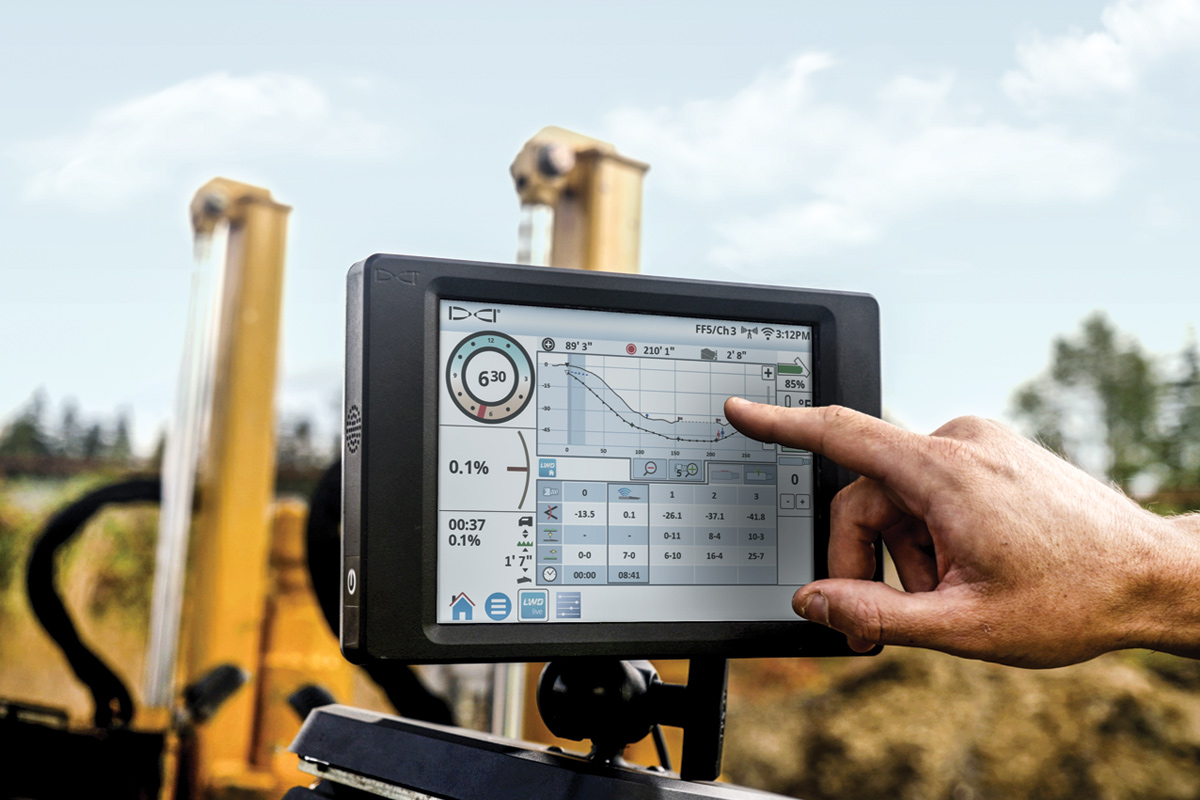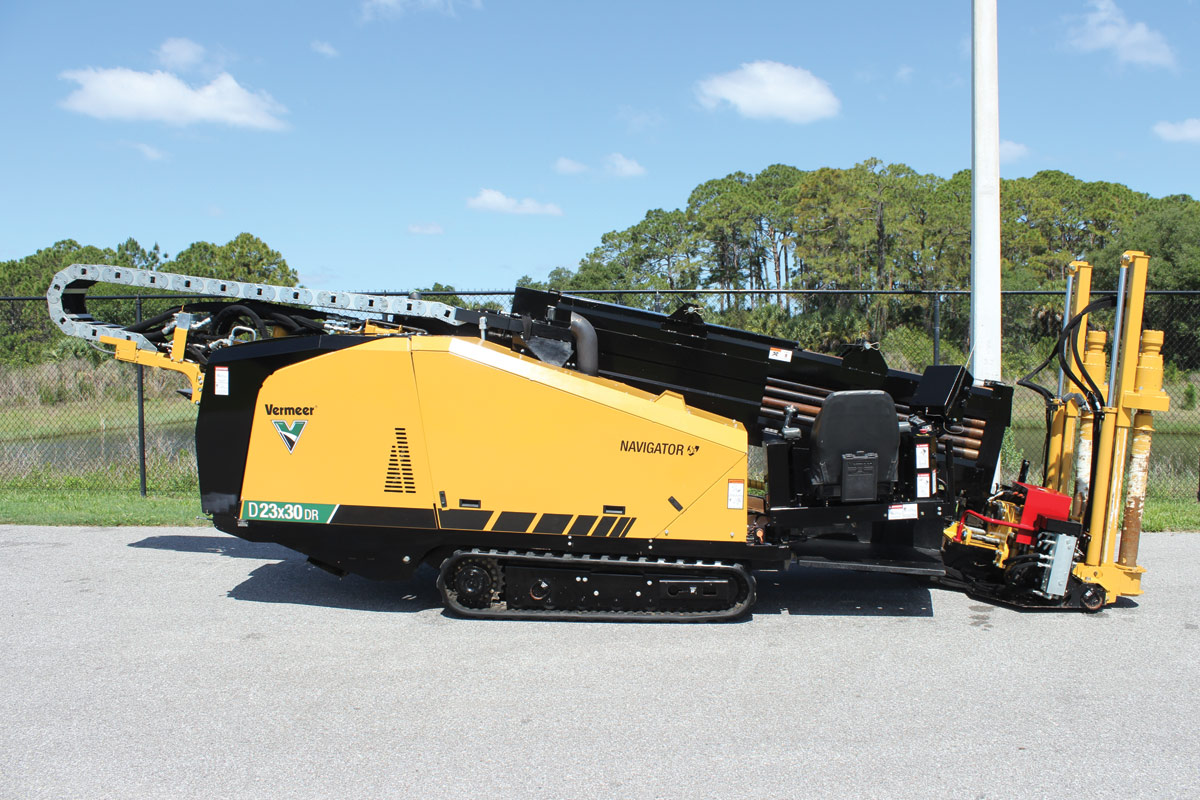
Fiber Network Allows for ‘Next Generation’ Technology at University
January 20, 2016
When a Midwestern liberal arts college
sought a contractor to build out a new fiber-optic network to support the technologies necessary to offer a 21st century education, K&W Underground Inc. had two distinct advantages.
First, the company’s headquarters is just a few miles from the customer, MidAmerica Nazarene University, in Olathe, Kan., a suburb of Kansas City. Second, K&W Underground offers turnkey services and is adept at handling all phases of a project, from the design to installation to maintenance.
“The entire process is within our control, and we feel like that gives our customers a better and a seamless end product,” says K&W Underground president Rex Schick.
It also helped that the company specializes in fiber-optic and telecommunication projects. So it was no surprise that it was awarded the job by MidAmerica Nazarene University.
The installation was completed this past summer between the end of the spring semester and the start of fall classes. The total length was 25,500 ft, with all of it installed using horizontal directional drilling (HDD). That consisted of a 13,500-ft fiber-optic ring that serves as the backbone of the network, plus 12,000 ft of laterals to connect 23 buildings on campus.
Fiber Feeds Education
The MidAmerica Nazarene University fiber network is an example of where education is heading and how fiber-optic lines are needed to get there. It’s also an example of why experts in the underground industry are proclaiming another fiber boom has arrived.
The school has more than 2,000 students and offers more than 40 academic majors and nine pre-professional programs. Its old fiber infrastructure had suffered from age, previous industry standards, older installation methods and harsh Kansas weather, says Mark Leinwetter, the school’s information technology services manager. The fiber cable itself came from dated technology with limited capabilities.
The new network provides students, faculty and staff with a reliable communication system able to support technologies like high-definition video, cloud services, virtual desktops, smart classrooms, data warehousing and Google Fiber, the broadband Internet and TV service the Internet giant launched in Kansas City.
“The new network will provide the backbone for current and next generation technologies used by educational communities to enhance our students’ education,” Leinwetter says.

The MidAmerica Nazarene University project consisted of a 13,500-ft fiber-optic ring that serves as the backbone of the network, plus 12,000 ft of laterals to connect 23 buildings on campus.
Choosing HDD
While researching the project, university officials determined horizontal directional drilling would be the best installation method on the 100-acre campus.
“It allows you to run conduit underneath parking lots and sidewalks to avoid having to rip up the concrete and restore it after the conduit is laid,” Leinwetter says. “Overall, it is more cost-effective and efficient.”
K&W Underground consulted with school officials to design the network. Key considerations were avoiding areas the school might develop in the future and minimizing the footage of conduit installed.
Another forward-thinking aspect of the design was the installation of a spare conduit. A K&W Underground directional boring crew installed two 2-in. HDPE SDR 13.5 conduits.
“Nobody knows for sure what the next generation of technology will bring,” Schick says. “The school wanted to be able to have a network that they could expand in the future if necessary, so a spare conduit was included.”
The ground conditions were about 65 percent rock — a combination of solid rock and chunks of rock believed to be limestone — with the rest a clay-soil mix. K&W Underground used its Vermeer D24x40 Series II Navigator HDD as the primary drill on the job because it had the power and force they needed to get through the rock.
“We anticipated it to be difficult ground conditions,” Schick says.
The crew went with a Vermeer D20x22 Series II Navigator HDD on a few bores when a smaller footprint was needed to access more compact spaces.
The average length of the bores for the fiber backbone was 500 ft; for the laterals, it was 150 ft. The crew installed about 220 ft of conduit a day. Cover was 36 to 48 in.
For the pilot bores, the crew used a Vermeer Armor drilling system 5.75-in. Gauntlet bit, which is designed for soft to medium rock, shale and caliche.
“It’s our experience in this area that you need to use a drill head like this because of the rocky conditions,” Schick says.
When encountering rock, the crew backreamed using a 6-in. fluted reamer by Vermeer, which works well in rugged ground conditions. In dirt, they used a Vermeer 6-in. spiral reamer.
Good Communication
The installation occurred without a hitch. That was thanks in part to the constant communication between K&W Underground and MidAmerica Nazarene University. Although the work occurred in the summer, there were classes in session and people on campus. Before construction started, a schedule was developed to avoid as many disruptions as possible. During the installation, company and University officials met weekly to tweak that plan as needed.
“The cooperation between us and the flexibility with which we were able to operate, while minimizing the disruption to the college and the students, were important parts of this project,” Schick says.
Proper planning is extremely important with underground installations, Schick says. That’s especially true as underground infrastructure gets increasingly crowded, which he says is the biggest challenge in the industry today.
“The ability to identify those utility lines, locate them and then do subsurface utility investigation work — potholing work — is a large part of what we do and increasingly more difficult,” he says.
The MidAmerica Nazarene University job had a different twist on utility locates. The congestion was not as bad because it was private property, but identifying and locating those lines was more difficult than with public utilities. The crew used a vacuum excavator to pothole; it also used the vacuum excavator to clean up excess drill fluid during the bores.
Assembly Line
The locating work is the first part of what K&W Underground refers to as its “assembly line” approach, in which a crew specializes in each phase of a job. First, utilities are identified and marked. Then a crew uses a vacuum excavator to verify those locations. Next, a drill crew does its work, followed by a tie-in crew with a backhoe or mini excavator to connect the conduits and to set the handholes for splicing points. After the product is installed, a crew does restoration work where needed.
Because K&W Underground is a turnkey contractor, its work continues after a drill leaves a jobsite. The company has crews that do inside plant work, which for the MidAmerica Nazarene University project meant connecting individual buildings to the fiber network. The company also has specialists who test a network before a project is considered officially complete.
The result for MidAmerica Nazarene University was an upgraded technology network that the school says supports its strategic plan to build resources and further develop campus infrastructure.
“MidAmerica Nazarene University is striving to provide the students and the faculty and staff with the tools and resources required for a world-class education,” Schick says. “They determined that a big part of that is having a telecommunication network infrastructure that allows them to provide worldclass telecom service.”
Gregg Hennigan is a features writer, based in Des Moines, Iowa.




